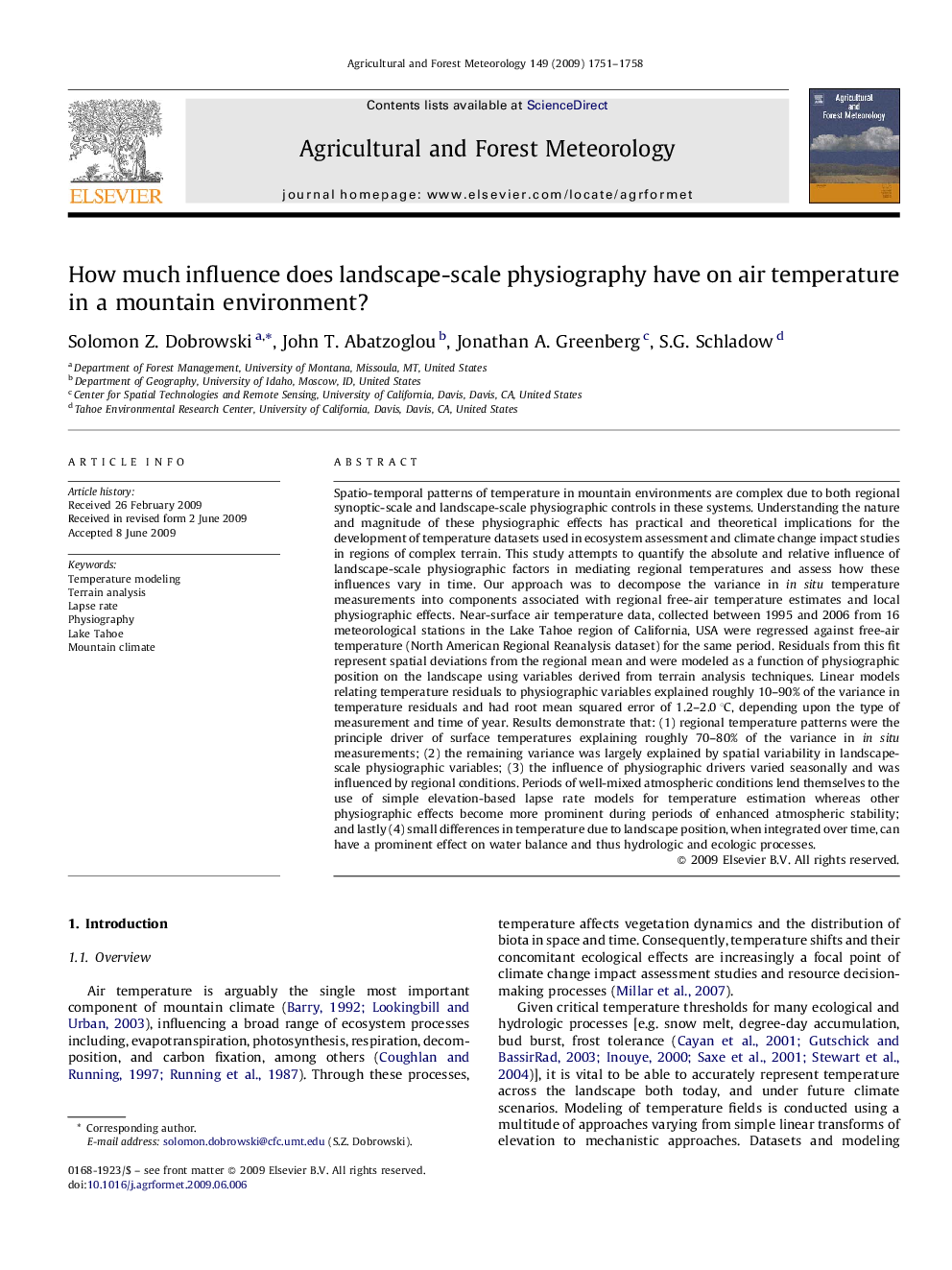| کد مقاله | کد نشریه | سال انتشار | مقاله انگلیسی | نسخه تمام متن |
|---|---|---|---|---|
| 82628 | 158405 | 2009 | 8 صفحه PDF | دانلود رایگان |

Spatio-temporal patterns of temperature in mountain environments are complex due to both regional synoptic-scale and landscape-scale physiographic controls in these systems. Understanding the nature and magnitude of these physiographic effects has practical and theoretical implications for the development of temperature datasets used in ecosystem assessment and climate change impact studies in regions of complex terrain. This study attempts to quantify the absolute and relative influence of landscape-scale physiographic factors in mediating regional temperatures and assess how these influences vary in time. Our approach was to decompose the variance in in situ temperature measurements into components associated with regional free-air temperature estimates and local physiographic effects. Near-surface air temperature data, collected between 1995 and 2006 from 16 meteorological stations in the Lake Tahoe region of California, USA were regressed against free-air temperature (North American Regional Reanalysis dataset) for the same period. Residuals from this fit represent spatial deviations from the regional mean and were modeled as a function of physiographic position on the landscape using variables derived from terrain analysis techniques. Linear models relating temperature residuals to physiographic variables explained roughly 10–90% of the variance in temperature residuals and had root mean squared error of 1.2–2.0 °C, depending upon the type of measurement and time of year. Results demonstrate that: (1) regional temperature patterns were the principle driver of surface temperatures explaining roughly 70–80% of the variance in in situ measurements; (2) the remaining variance was largely explained by spatial variability in landscape-scale physiographic variables; (3) the influence of physiographic drivers varied seasonally and was influenced by regional conditions. Periods of well-mixed atmospheric conditions lend themselves to the use of simple elevation-based lapse rate models for temperature estimation whereas other physiographic effects become more prominent during periods of enhanced atmospheric stability; and lastly (4) small differences in temperature due to landscape position, when integrated over time, can have a prominent effect on water balance and thus hydrologic and ecologic processes.
Journal: Agricultural and Forest Meteorology - Volume 149, Issue 10, 1 October 2009, Pages 1751–1758